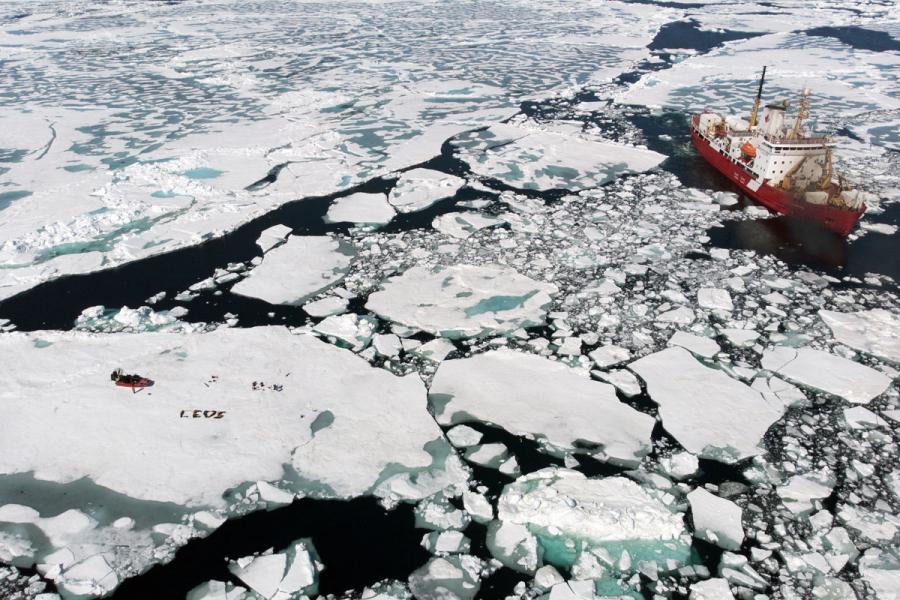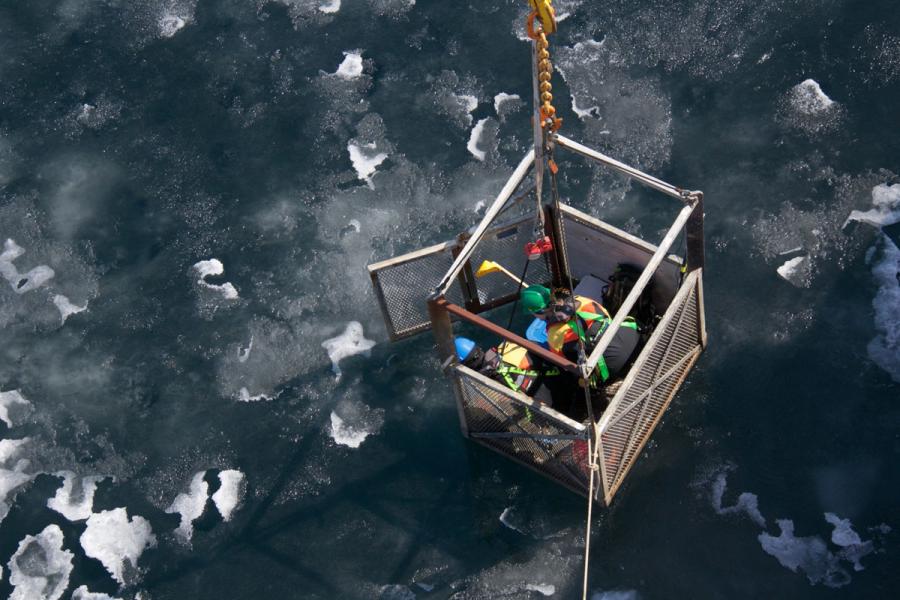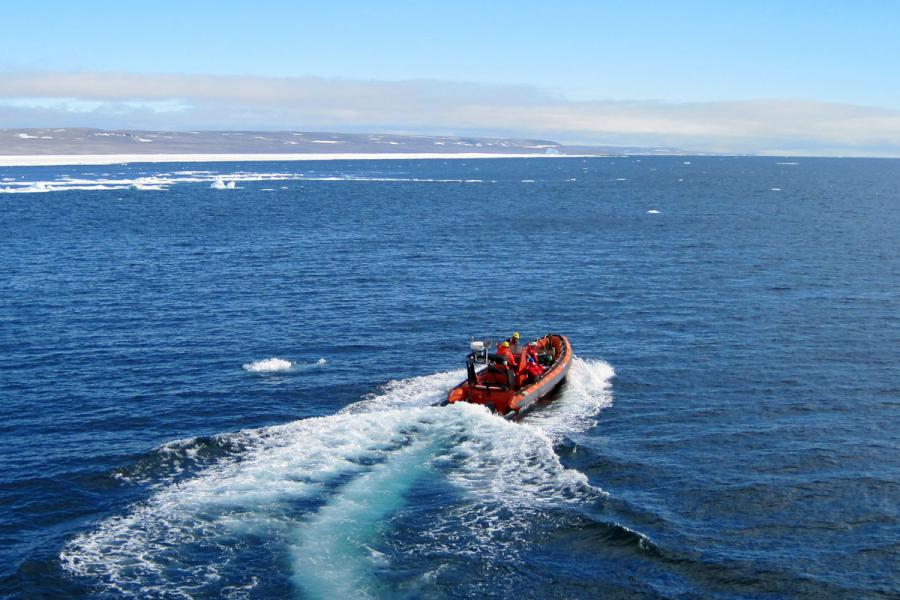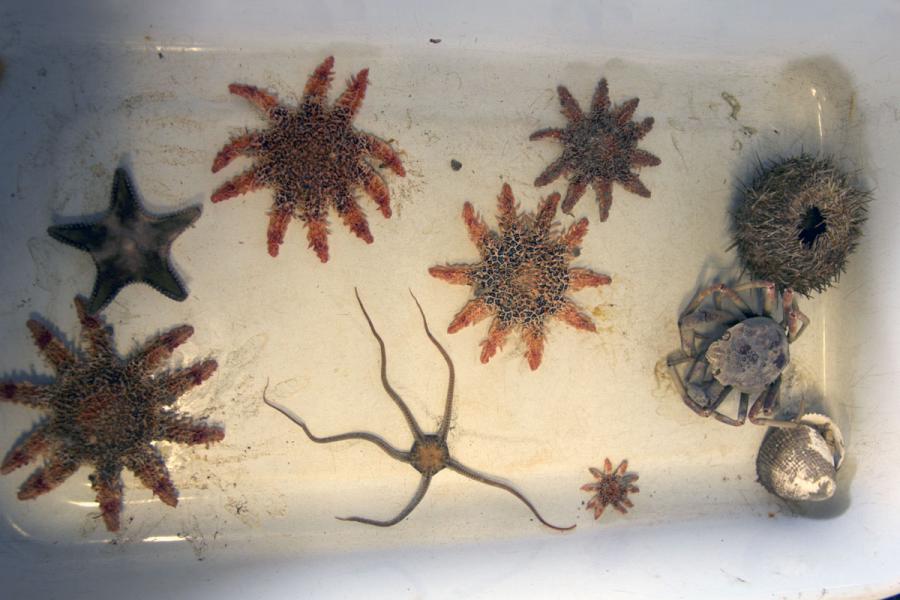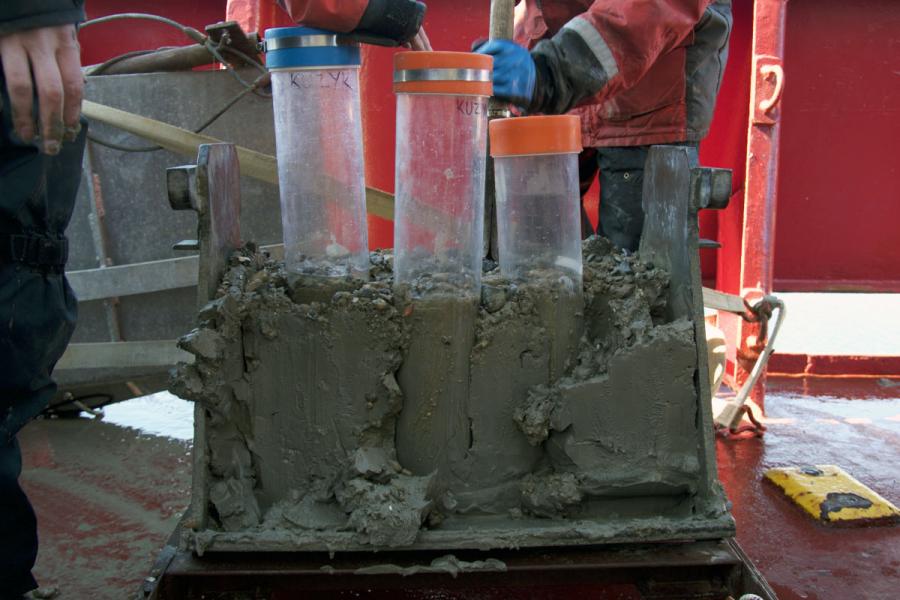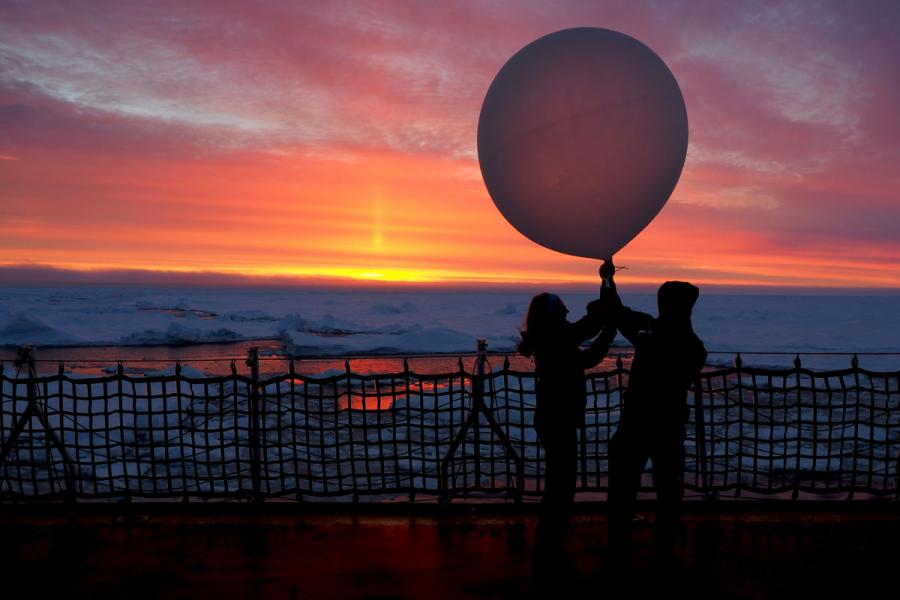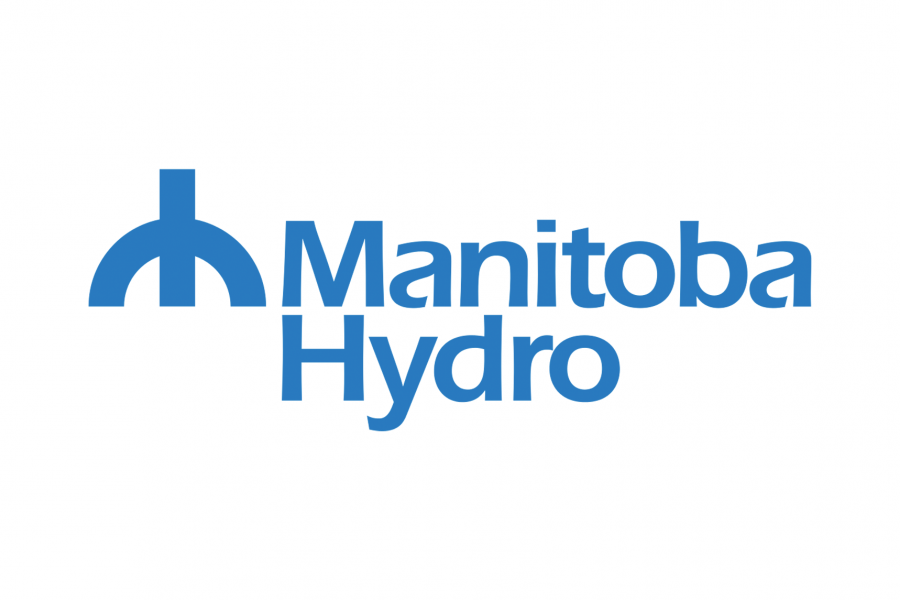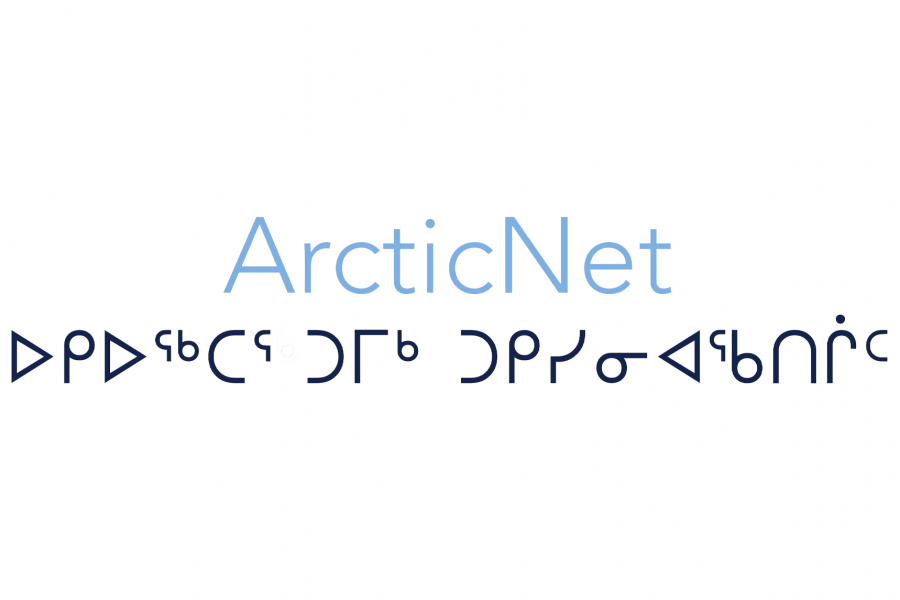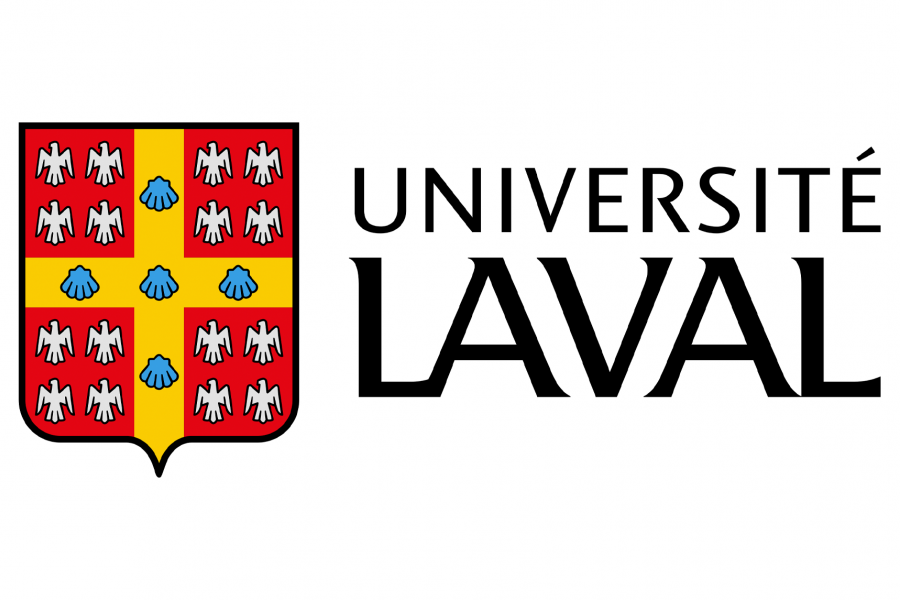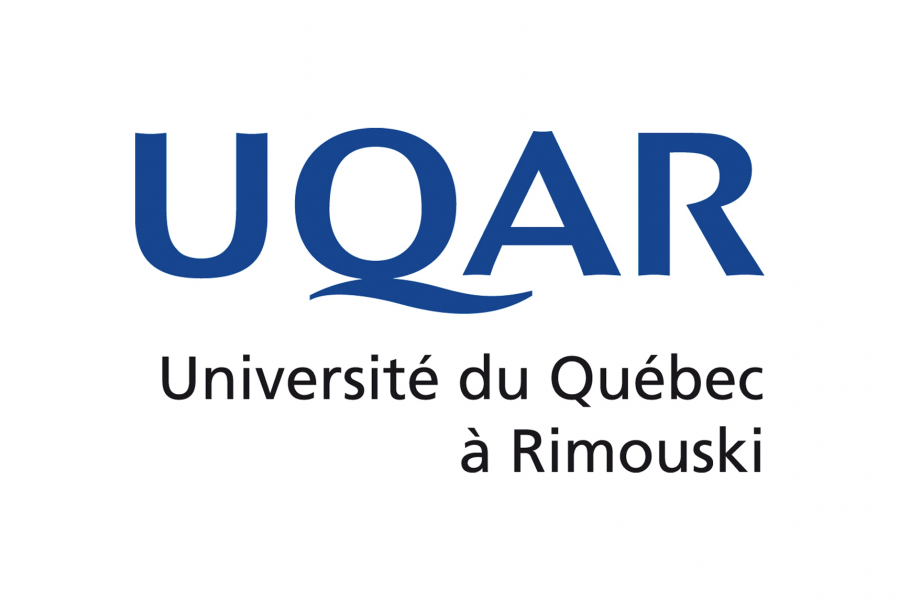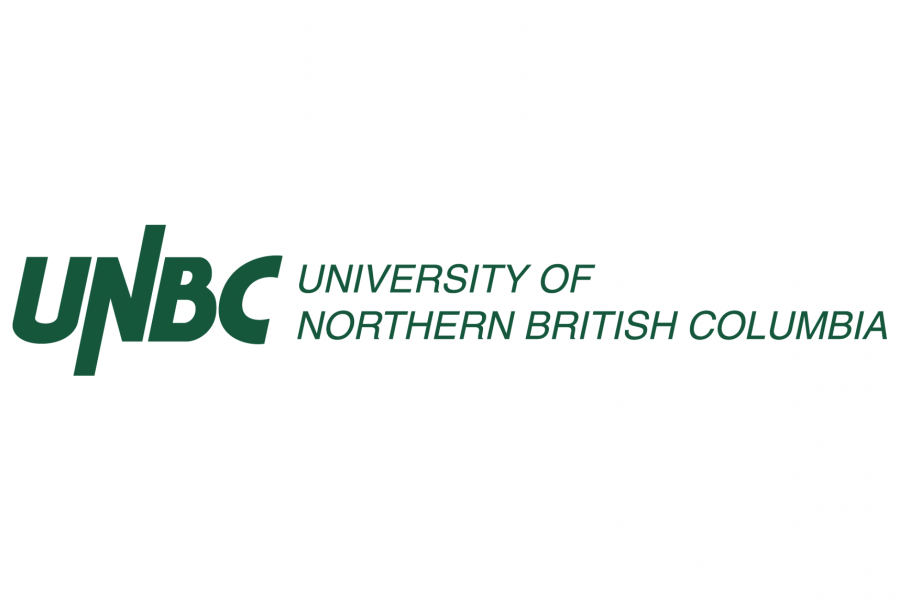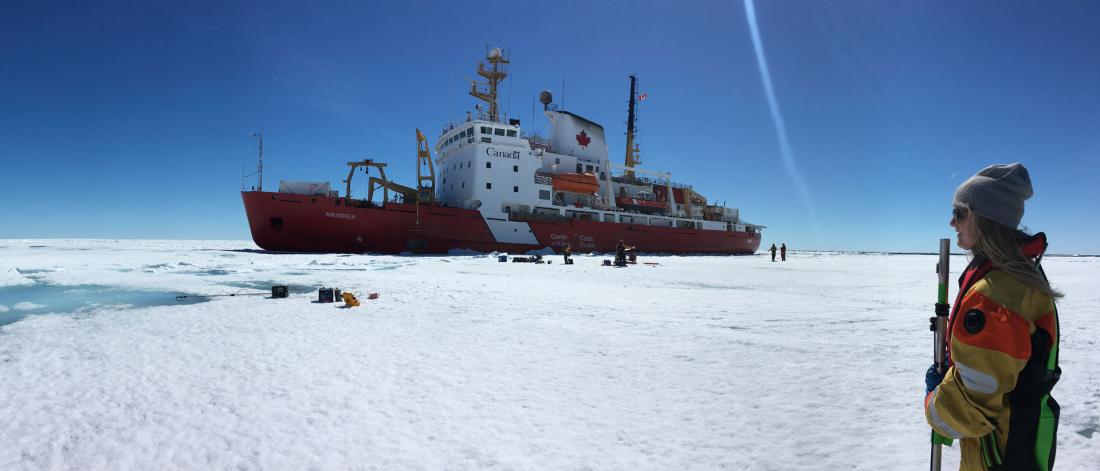
Background
The University of Manitoba and Manitoba Hydro have had a long history of collaboration, including programs in the Nelson River estuary (2005 and 2010) and a winter field program focusing on the characterization of ocean-sea-ice atmosphere coupling and sedimentary processes in 2009. Manitoba Hydro has a vested interest in research on impacts and adaptation strategies for climate change on northern ecosystems. BaySys was designed to help Manitoba Hydro investigate ways to enhance the quality and capacity of environmental science in the regions in which it operates, produce reliable assessments of impacts of climate change on water supply, and increase our understanding of the effects of climate change on the North. More broadly, BaySys was designed to provide a better understanding of how seasonal shifts in freshwater, sediment, and nutrient delivery and climate change may affect primary productivity, and transportation in Hudson Bay.
Research
BaySys is led by Principal Investigators Dr. David Barber at the University of Manitoba and Kevin Sydor at Manitoba Hydro. The project is managed and coordinated by Lauren Candlish and Dr. David Landry at the University of Manitoba in collaboration with Kevin Sydor and Karen Wong at Manitoba Hydro.
BaySys was the largest research program focused on the Hudson Bay Complex. With seven dedicated field campaigns from Fall 2016 to Summer 2018:
- 2016 Fall CCGS Des Groseilliers Mooring Deployment Campaign
- 2017 Winter Churchill River and Mobile Ice Survey
- 2017 Winter Nelson Estuary Landfast Ice Survey
- 2017 Winter and Spring Sediment Coring and Water Sampling Campaign
- 2018 Spring Hudson Bay Wide CCGS Amundsen Campaign
- 2018 Fall RV William Kennedy Mooring Retrieval
Project team
BaySys had over 110 researchers working collaboratively from seven universities and three partner organizations.
Leads
Centre for Earth Observation Science, University of Manitoba
- David Barber (Principal Investigator)
- Lauren Candlish (Academic Project Manager)
- David Landry (Academic Project Coordinator)
- Jens Ehn (Academic Lead)
- Tim Papakyriakou (Academic Lead)
- Feiyue Wang (Academic Lead)
Manitoba Hydro
- Kevin Sydor (Industry Lead and Project Manager)
- Karen Wong (Industry Lead and Project Coordinator)
- Kristina Koenig (Industry Lead)
- Gary Swanson (Industry Lead)
- Marilynn Kullman (Industry Lead)
- Bob Gill (Industry Lead)
- Allison Zacharias (Industry Lead)
Department of Geography, University of Calgary
- Tricia Stadnyk (Academic Lead)
Département de biologie, Université Laval
- Jean-Éric Tremblay (Academic Lead)
Earth and Atmospheric Sciences, University of Alberta
- Paul Myers (Academic Lead)
BaySys team members
Researchers
Centre for Earth Observation Science, University of Manitoba
- Zou Zou Kuzyk
- David Lobb
- CJ Mundy
- Søeren Rysgaard
- Igor Dmitrenko
- Greg McCullough
- Gary Stern
- David Babb
- Jennifer Bruneau
- David Capelle
- Laura Dalman
- Chris Fuller
- Madison Harasyn
- Sergei Kirillov
- Matt Macdonald
- Anirban Mukhopadhyay
- Kathleen Munson
Université Laval
- Louis Fortier
- Connie Lovejoy
- Frederic Maps
- Gabrièle Deslongchamps
Université du Québec à Rimouski
- Philippe Archambault
- Simon Bélanger
Université de Sherbrooke
- Céline Guéguen
University of Northern British Columbia
- Stephen Déry
- Philip Owens
- Ellen Petticrew
University of Calgary
- Brent Else
- Andrew Tefs
University of Guelph
- Genevieve Ali
Fisheries and Oceans Canada
- Robie Macdonald
- Lisa Miller
Environment and Climate Change Canada
- Frédéric Dupont
Ouranos
- Marco Braun
Manitoba Hydro
- Kevin Gawne
- Mark Gervais
- Phil Slota
- Mike Vieira
- Jason Westmacott
- Shane Wruth
Hydro Québec
- Isabelle Chartier
- Vincent Fortin
- Nathalie Thiémonge
Technicians
Centre for Earth Observation Science, University of Manitoba
- Evelyn Ang
- Debbie Armstrong
- David Binne
- Yanique Campbell
- Wayne Chan
- Casey Clair
- Zhuohong (John) Gu
- Claire Herbert
- Miyen-Ebi (Victory) Iyakoregha
- Dallas Korell
- Shae-Lynn Laurencelle
- Shiva Lashkari
- Sebastian Luque
- Rodney N-Chris
- Keesha Peterson
- Emmelia Stainton
- Heather Stark
Université Laval
- Jonathan Gagnon
Graduate Students
University of Manitoba
- Atreya Basu (PhD)
- Masoud Goharrokhi (PhD)
- Kaushik Gupta (PhD)
- Shabnam JafariKhasragh (PhD)
- Lisa Matthes (PhD)
- Chris Peck (PhD)
- Vlad Petrusevich (PhD)
- Marie Broesky (MSc)
- Alessia Guzzi (MSc)
- Samantha Huyghe (MSc)
- Satwant Kaur (MSc)
- Zakhar Kazmiruk (MSc)
- Scott Pokorny (MSc)
- James Singer (MSc)
- Tassia Stainton (MSc)
Université Laval
- Inge Deschepper (PhD)
- Loïc Jacquemot (PhD)
- Janghan Lee (PhD)
- Marie Pierrejean (PhD)
- Sarah Schembri (PhD)
Université du Québec à Rimouski
- Lucas Barbedo de Freitas (PhD)
Trent University
- Sohidul Islam (PhD)
University of Calgary
- Mohamed Ahmed (PhD)
- Stephen Gonski (PhD)
University of Alberta
- Yarisbel Garcia Quintana (PhD)
- Natasha Ridenour (PhD)
University of Northern British Columbia
- Rajtantra Lilhare (PhD)
Research Advisory Committee
Fisheries and Oceans Canada
- Robert Young
University of Minnesota
- Robert E Hecky
University of Manitoba
- Norm Halden
Manitoba Hydro
- Efrem Teklemariam
- Shelley Matkowski
Impacts and outcomes
-
110
Researchers
-
7
Field campaigns
-
160+
Conference presentations
-
70+
Peer-reviewed publications
The information collected and models developed under BaySys enhanced our understanding of the impacts of regulation projects compared to the impacts of other factors such as climate change. This research informed climate change studies on the variability of water supply and related risks to energy production. This research ultimately helped inform Manitoba Hydro’s understanding of its carbon footprint, complement carbon cycling, and reservoir greenhouse gas studies. Information from the BaySys research project also enhanced Manitoba Hydro’s goals of sustainable development, proactively protecting the environment, and methods for adapting to climate change.
BaySys Special Feature in Elementa: Science of the Anthropocene
A collection of over 25 peer reviewed publications from BaySys are available through the trans-disciplinary open access journal.
Field reports
Detailed descriptions from each of the field campaigns including activity logs.
Phase 1 report: Campaign Reports and Data Collection (PDF)
The Phase 1 report details the data collection methods and procedures. It also provides detailed information for the hydrologic (HYPE) and Oceanographic (NEMO)models and the IPCC forcing scenarios.
Phase 2 report (draft)
The 2 Phase report provides a detailed description of the analysis and the results for each team. The concluding chapter provides a summary of how the project objectives were achieved.
Other key publications from BaySys
Flow alteration impacts on Hudson Bay river discharge
Déry, S., Stadnyk, T., MacDonald, M., Koenig, K., & Guay, C. (2018). Flow alteration impacts on Hudson Bay river discharge. Hydrological Processes, 32(24), 3576–3587. DOI: 10.1002/hyp.13285
Atmospherically-forced sea-level variability in western Hudson Bay, Canada. Ocean Science Discussion
Dmitrenko, I., Volkov, D., Stadnyk, T., Tefs, A., Babb, D., Kirillov, S., Crawford, A., Sydor, K., Barber, D. (2021). Atmospherically-forced sea-level variability in western Hudson Bay, Canada. Ocean Science Discussion. DOI: 10.5194/os-2021-50
Sedimentation dynamics within a large shallow lake and its role in sediment transport in a continental-scale watershed. Journal of Great Lakes Research
Goharrokhi, M., McCoullough, G., Owens, P., Lobb, D. (2021). Sedimentation dynamics within a large shallow lake and its role in sediment transport in a continental-scale watershed. Journal of Great Lakes Research.47(3) 725-740. DOI: 10.1016/j.jglr.2021.03.022
Atmospheric forcing drives the winter sea ice thickness asymmetry of Hudson Bay
Kirillov, S., Babb, D., Dmitrenko, I., Landy, J., Lukovich, J., Ehn, J., Sydor, K., Barber, D., Stroeve, J., (2020). Atmospheric forcing drives the winter sea ice thickness asymmetry of Hudson Bay. J. Geophys. Res.: Oceans, 125, e2019JC015756. DOI: 10.1029/2019JC015756
Modelling Sea Surface Temperature (SST) in the Hudson Bay Complex Using Bulk Heat Flux Parameterization: Sensitivity to Atmospheric Forcing, and Model Resolution
JafariKhasragh, S., Lukovich, J., Hu, X., Myers, P., Sydor, K., & Barber, D. (2019). Modelling Sea Surface Temperature (SST) in the Hudson Bay Complex Using Bulk Heat Flux Parameterization: Sensitivity to Atmospheric Forcing, and Model Resolution. Atmosphere-Ocean, 57(2), 120–133. DOI: 10.1080/07055900.2019.1605974
Revisiting the circulation of Hudson Bay: Evidence for a seasonal pattern
Ridenour, N. A., Hu, X., Sydor, K., Myers, P. G., & Barber, D. G. (2019). Revisiting the circulation of Hudson Bay: Evidence for a seasonal pattern. Geophysical Research Letters, 46, 3891–3899. DOI: 10.1029/ 2019GL082344
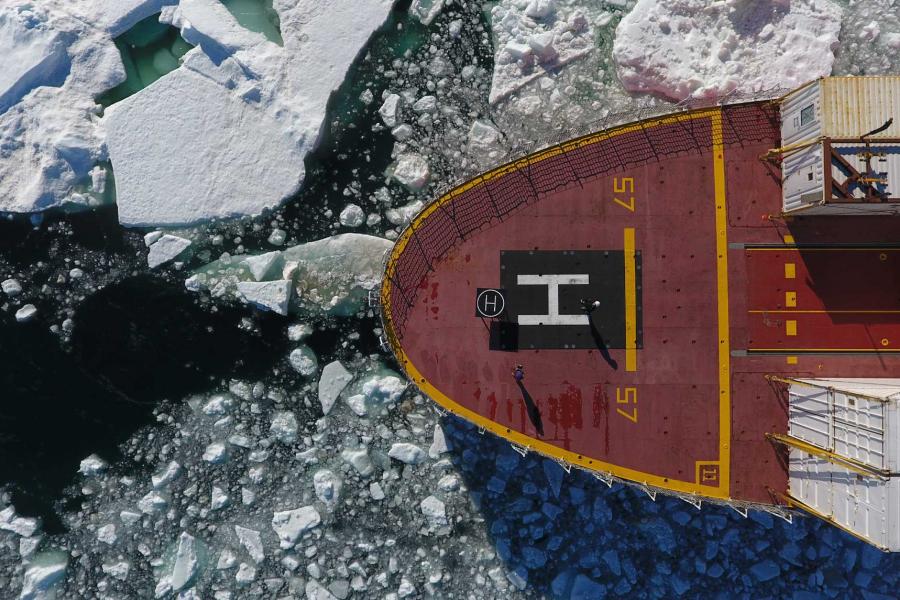
Field stories
Students in CEOS conduct research that contributes to the global conversation on climate change and its effects on our planet. From their field research, they write stories and bring photos back from their experiences.
Funding and partners
This project is part of the NSERC-Manitoba Hydro-funded Collaborative Research and Development (CRD) program. Primary data collection for this research would not have been possible without the support and hospitality of the CCGS Amundsen crew during the 2018 field season, along with Amundsen Science. Much of the HQP and graduate student research has been supported by the University of Manitoba Graduate Fellowship (UMGF), the Northern Scientific Training Program (NSTP), and NSERC Masters and Doctoral Awards. This work is a contribution to the ArcticNet Networks of Centres of Excellence and the Arctic Science Partnership (ASP, asp-net.org).

